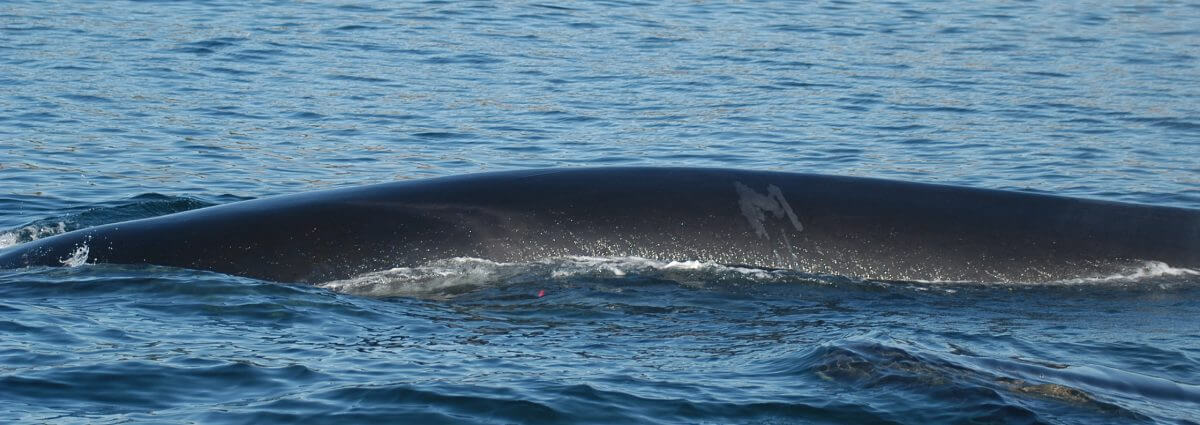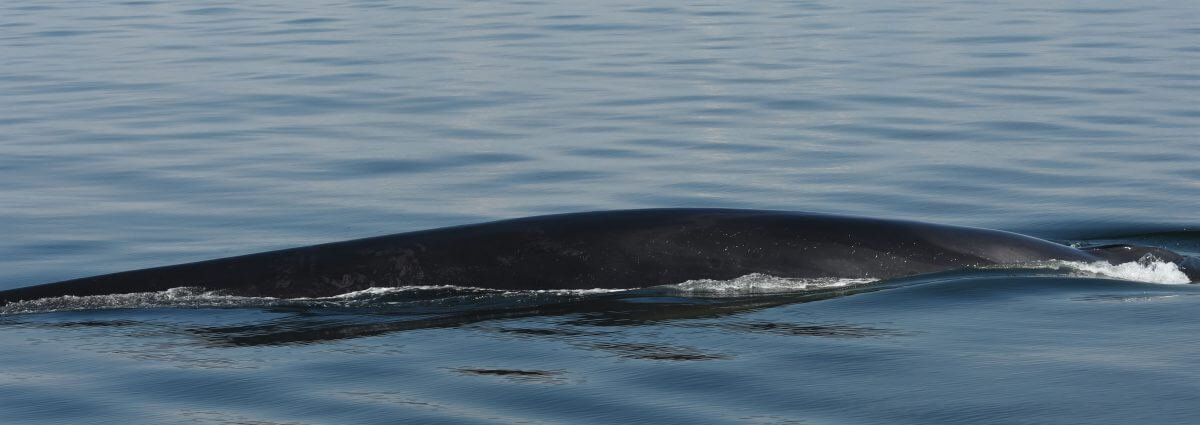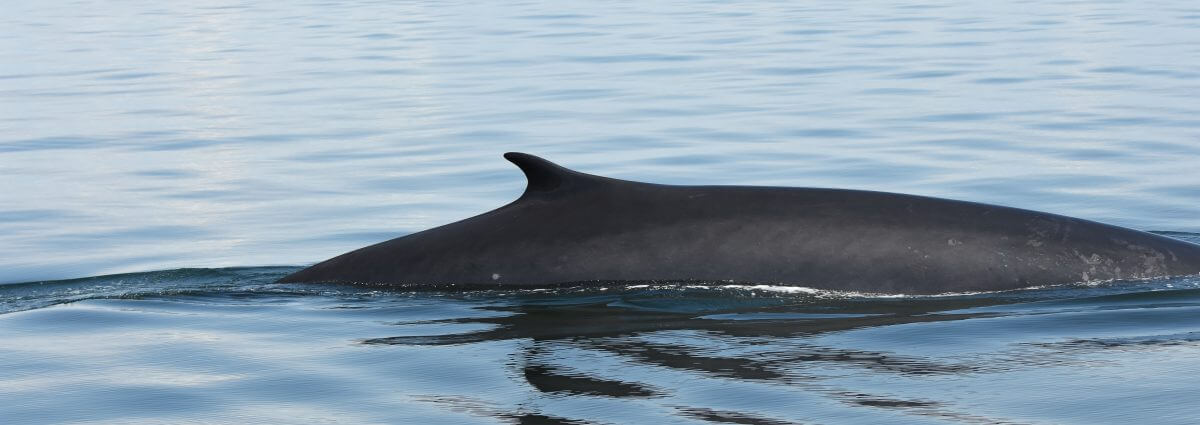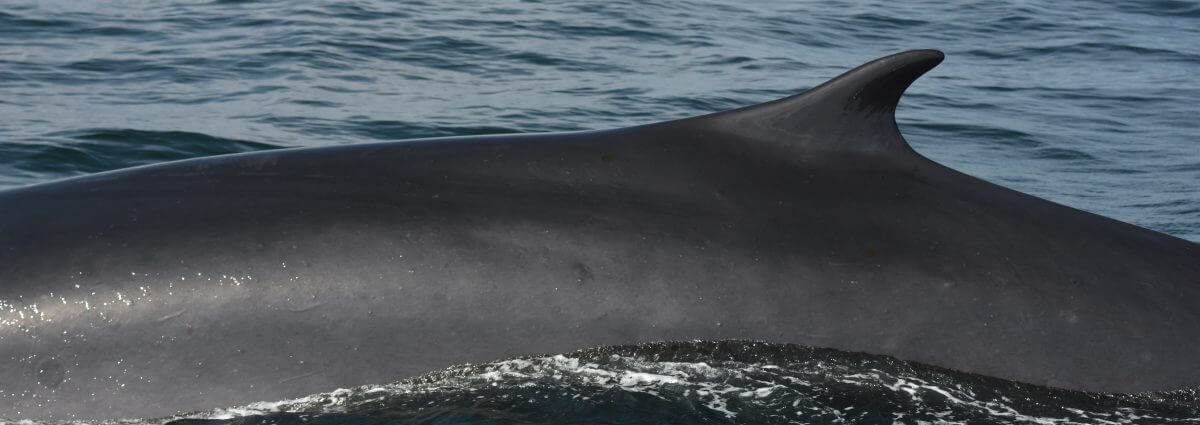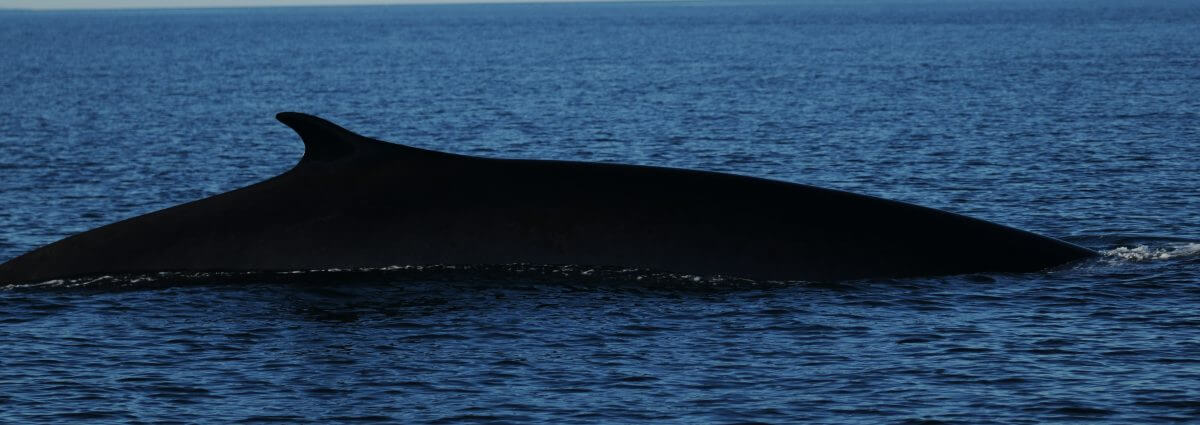Corsaire
Fin Whale


-
ID number
Bp044
-
Sex
Female
-
Year of birth
Unknown
-
Known Since
1991
Distinctive traits
Corsaire is recognizable by her distinctive right chevron, which is shaped like an “S.” Her dorsal fin is rather tapered and pointed.
She also has a small scar behind her left chevron.
Life history
Corsaire was spotted with a calf in 2006; however, this single observation does not allow us to conclude that it was indeed hers. During this encounter, biopsies were taken from both individuals in order to establish their relationship through genetic matching.
Corsaire has been identified only about ten times since her first visit to the St. Lawrence Estuary in 1991. Given her low frequency of visits, she is considered an occasional visitor.
Observations history in the Estuary
Years in which the animal was not observed Years in which the animal was observed
Latest news from the publications Portrait de baleines
Although she seems to prefer visiting at the end of summer, Corsaire is still an occasional visitor to the area. Where does Corsaire go between her sporadic visits to the estuary? This question remains unanswered. Thanks to a biopsy taken in 2006, we were able to confirm that she is a female. That same year, she was also observed with a calf. In 2016, we thought we would be able to study her diving behavior, but Corsaire was as quick as lightning and swam away before the tag could be attached…
Corsaire is a female who can be recognized by her distinctive straight S-shaped chevron. Her dorsal fin is quite tapered and pointed. On her left side, there is a slight scar behind her chevron that helps to identify her. In 2006, Corsaire was seen with a calf, but this single observation is not enough to conclude that it was indeed hers. During this encounter, biopsies were performed that could allow us to genetically match these two individuals. In the estuary, according to the skin samples collected, there are about as many males as females. Males arrive in the region one or two weeks before females and stay longer than females, which explains why males are observed more often.
Corsaire has been identified in only 6 of the 25 years since her first visit to the St. Lawrence Estuary in 1991. This low identification rate makes her an occasional visitor. In the St. Lawrence Estuary, fin whales are grouped into three categories based on the percentage of identification since their first year of visiting the estuary: seasonal resident (75% and above), regular visitor (40% to 75%), and occasional visitor (less than 40%). With the North Atlantic population estimated at over 50,000 individuals, it can be assumed that there are other summer feeding grounds, outside the St. Lawrence, where occasional and regular visitors feed. In Canada, the most common areas are off the coast of Nova Scotia and Newfoundland. Elsewhere in the Northwest Atlantic, fin whales are found off the east coast of the United States and in the Bering Sea. However, little data has been analyzed regarding the links between the different populations. In the Gulf of St. Lawrence, GREMM, MICS (Mingan Island Cetacean Study) and Fisheries and Oceans Canada are continuing their research efforts, particularly photo-identification and telemetry.

